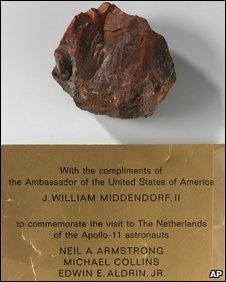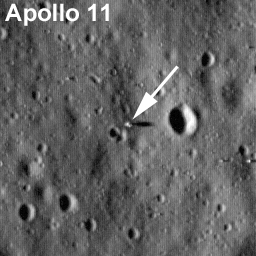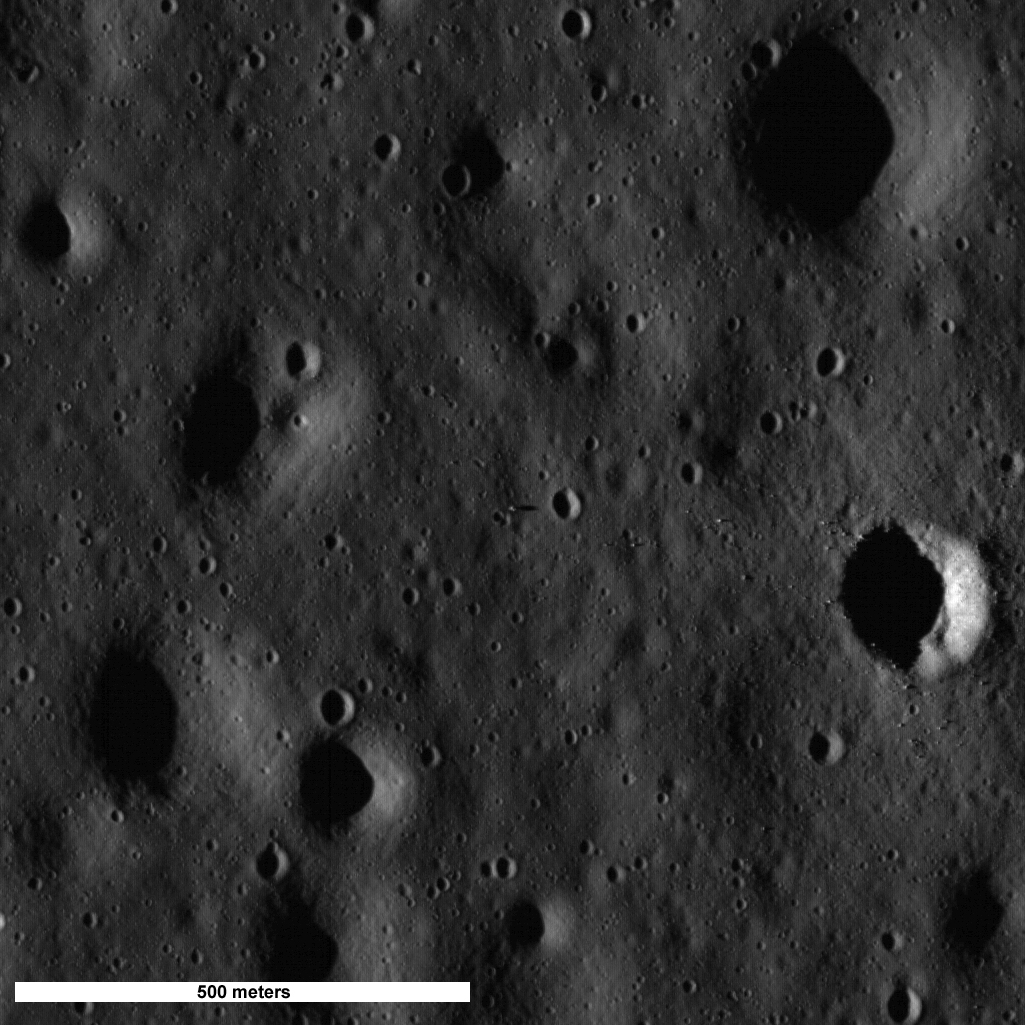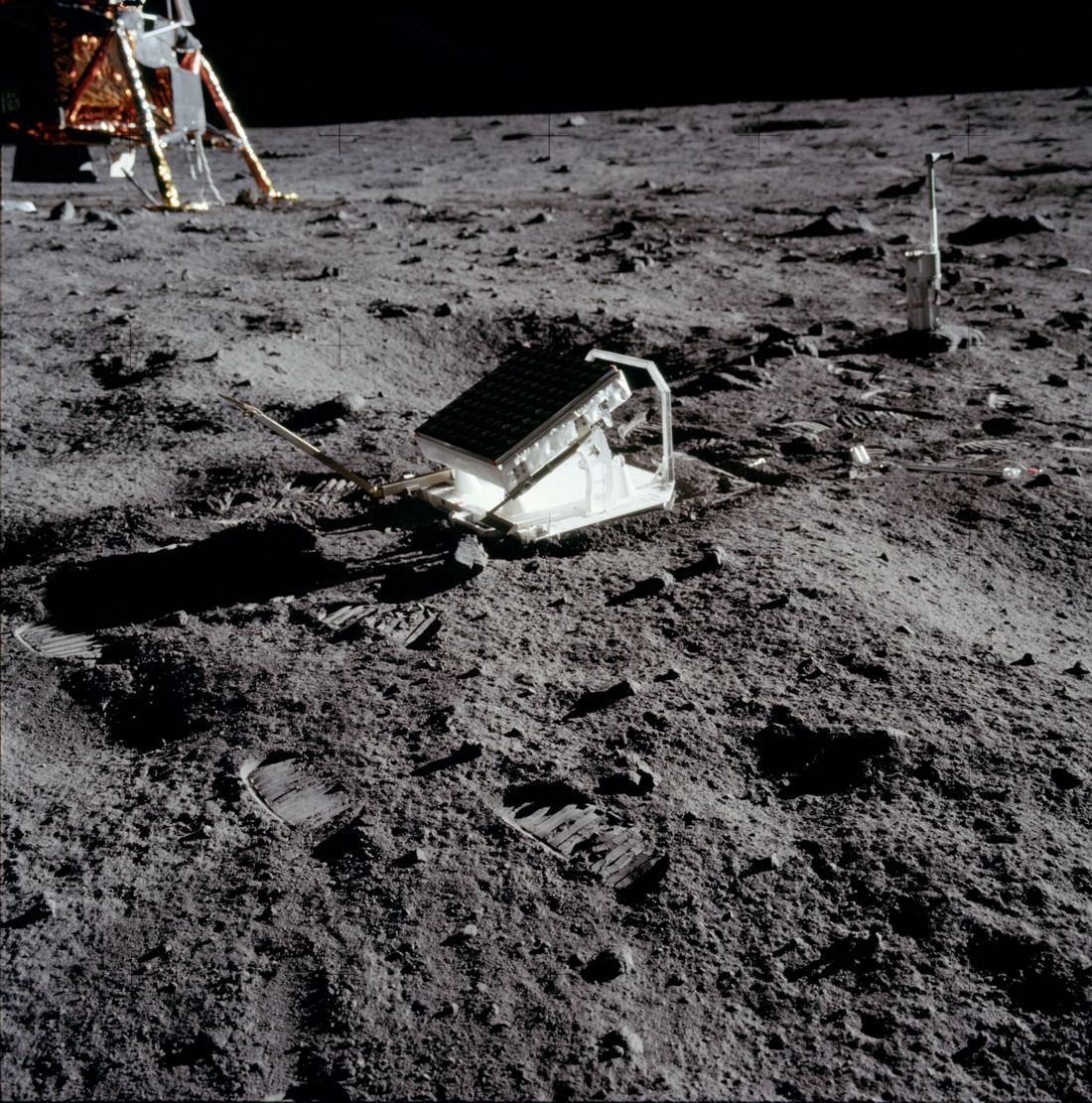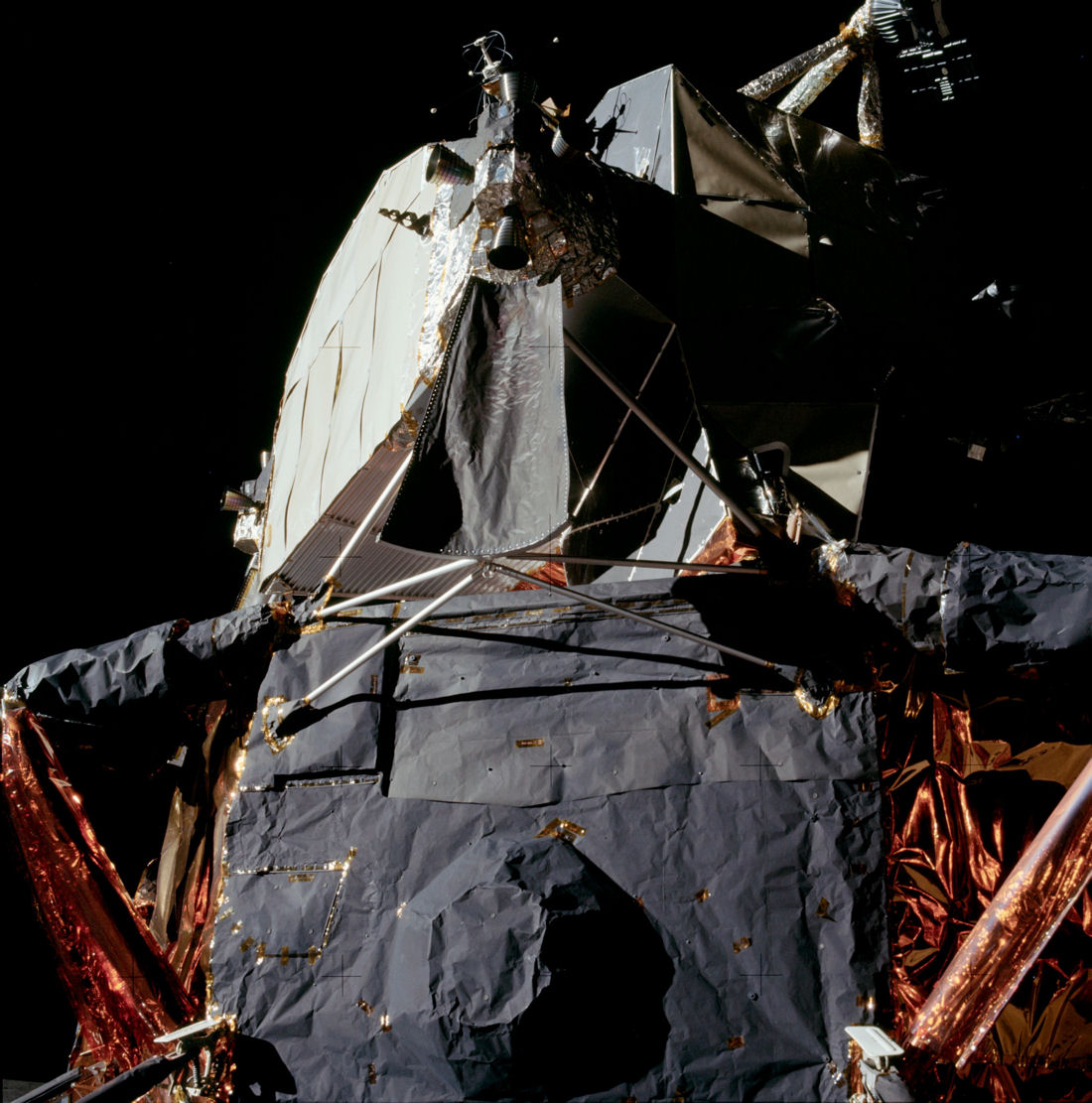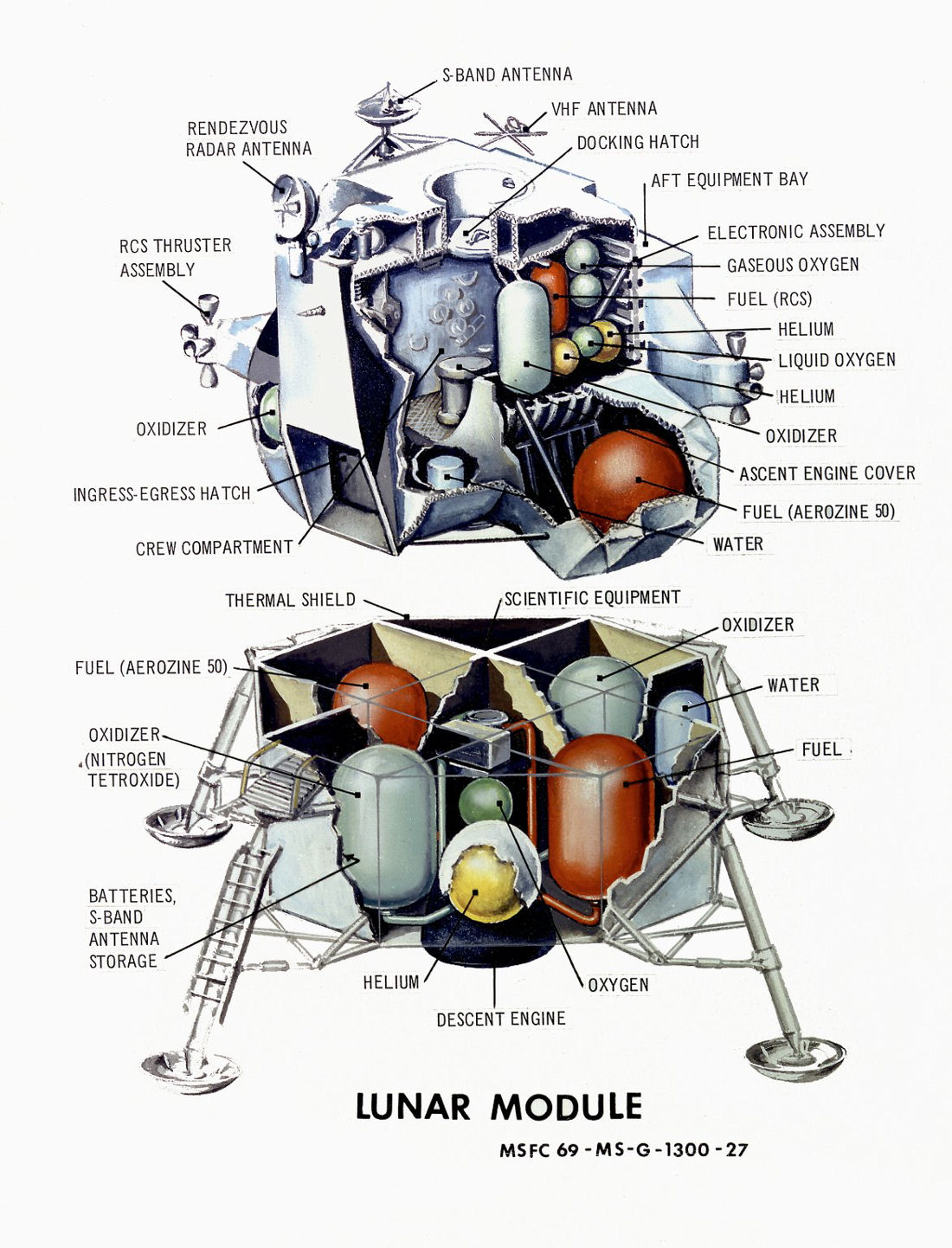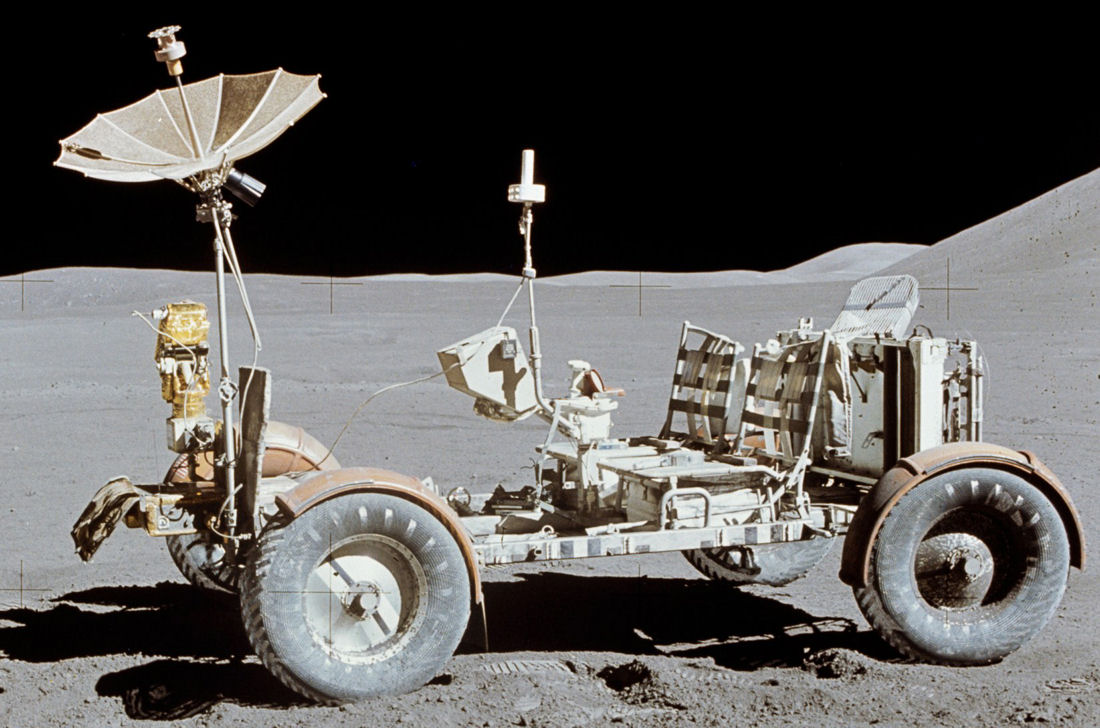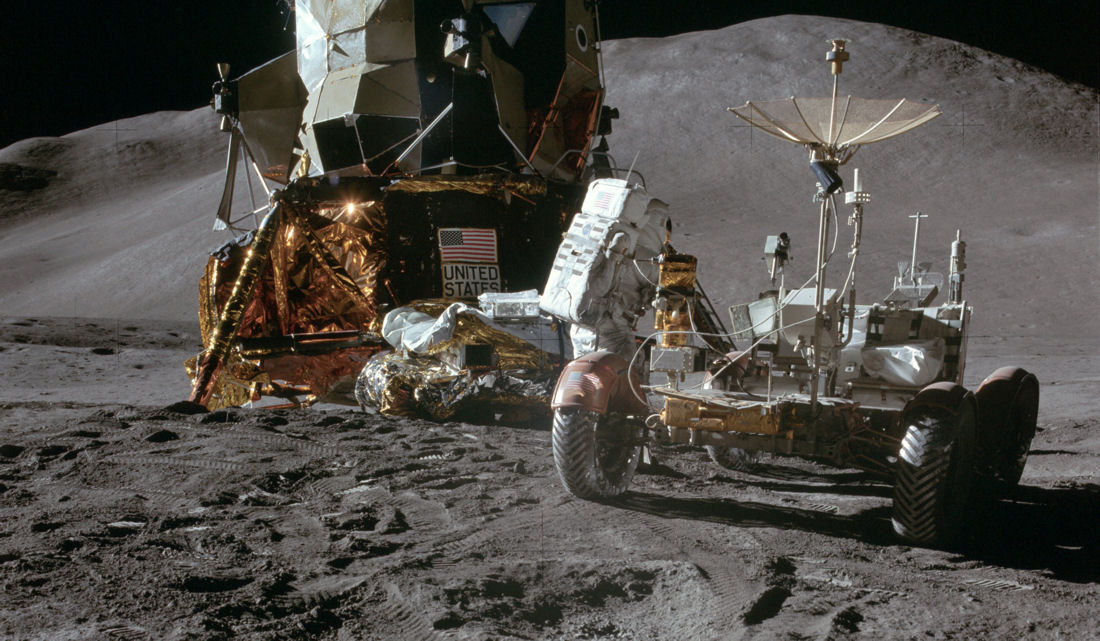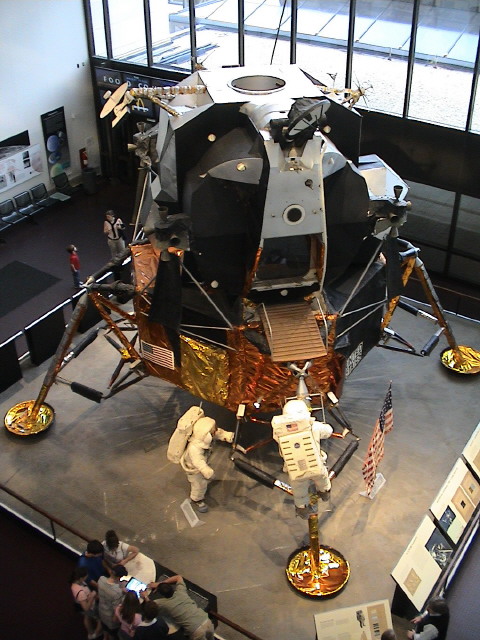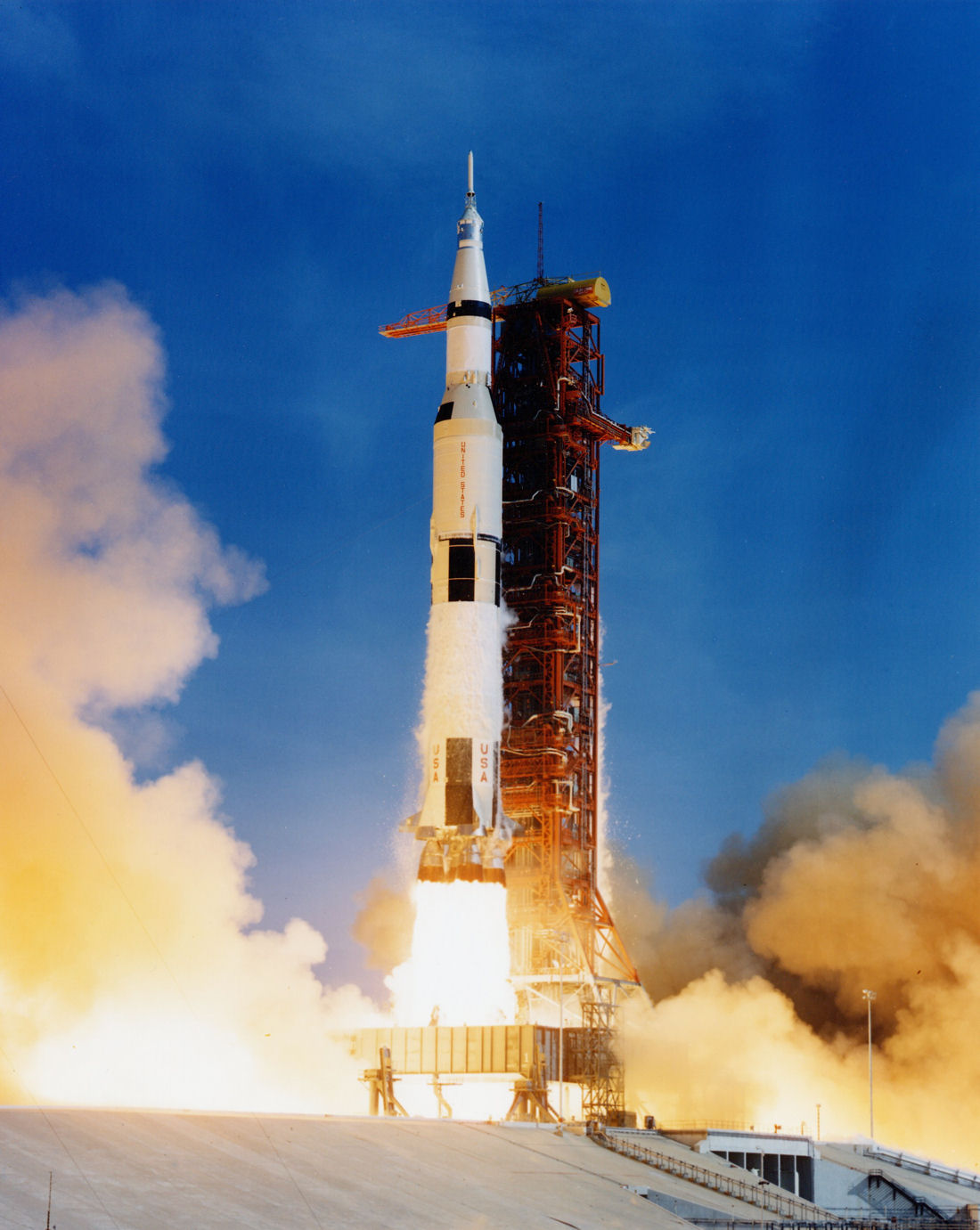“It is commonly believed that man will fly directly from the earth to the moon, but to do this, we would require a vehicle of such gigantic proportions that it would prove an economic impossibility. It would have to develop sufficient speed to penetrate the atmosphere and overcome the earth’s gravity and, having traveled all the way to the moon, it must still have enough fuel to land safely and make the return trip to earth. Furthermore, in order to give the expedition a margin of safety, we would not use one ship alone, but a minimum of three … each rocket ship would be taller than New York’s Empire State Building [almost ¼ mile high] and weigh about ten times the tonnage of the Queen Mary, or some 800,000 tons.”—Wernher von Braun, the father of the Apollo space program, writing in Conquest of the Moon
I can see all of you scratching your heads out there and I know exactly what it is that you are thinking: “Why the hell are we taking this detour to the Moon? What happened to Laurel Canyon? Have you completely lost your mind?”
*Sigh*
It all began a few months ago, when I became very busy at my day job as well as with family drama and with what turned out to be a very time-consuming side project, all of which made it increasingly difficult for me to carve out chunks of time to work on the remaining chapters in the series. Over the next two months or so, I pretty much lost all momentum and soon found it hard to motivate myself to write even when I could find the time.
That happens sometimes. Though it sounds rather cliché, ‘writer’s block’ is a very real phenomenon. There are many times when I can sit down at the keyboard and the words flow out of my head faster than I can get them down on the page. But there are also times when producing just one halfway decent sentence seems a near impossible task. This was one of those times.
I found a new source of inspiration, however, when my wife e-mailed me the recent story about the fake Dutch Moon rock, which I and many others found quite amusing, and which also reminded me that I had a lot of other bits and pieces of information concerning the Apollo project that I had collected over the nine years that have passed since I first wrote about the alleged Moon landings. After taking that first look, back in 2000, I was pretty well convinced that the landings were, in fact, faked, but it was perfectly obvious that the rather short, mostly tongue-in-cheek post that I put up back in July of 2000 was not going to convince anyone else of that.
So I contemplated taking a more comprehensive look at the Apollo program. Toward that end, I pulled up my original Apollo post along with various other bits and pieces scattered throughout past newsletters, threw in all the newer material that had never made it onto my website, and then combed the Internet for additional information. In doing so, I realized that a far better case could be made than what I had previously offered to readers.
I also realized that a far better case could be made than what is currently available on the ‘net.
I was rather surprised actually by how little there is out there – a couple of books by Bill Kaysing and Ralph Rene, a smattering of websites and a variety of YouTube videos of varying quality. Virtually all of the websites and videos tend to stick to the same ground covered by Kaysing and Rene, and they almost all use the same NASA photographs to argue the same points. So too do the sites devoted to ‘debunking’ the notion that the landings were faked, and those sites seem to actually outnumber the hoax sites.
While suffering through the numbing uniformity of the various websites on both sides of the aisle, it became perfectly clear that the hoax side of the debate was in serious need of a fresh approach and some new insights. So I began writing again. Feverishly. That does not mean, however, that I have abandoned the Laurel Canyon series. I intend to get back to it quite soon.
And truth be told, while the Apollo story may initially appear to be a radical departure from the ongoing Laurel Canyon series, it actually isn’t much of a detour at all. After all, we’re still going to be living in the 1960s and 1970s. And to a significant degree, we’re probably still going to be hanging out in Laurel Canyon – because who else, after all, was NASA going to trust to handle the post-production work on all that Apollo footage if not Lookout Mountain Laboratory?
I am very well aware, by the way, that there are many, many people out there – even many of the people who have seen through other tall tales told by our government – who think that Moon hoax theorists are complete kooks. And a whole lot of coordinated effort has gone into casting them as such. That makes wading into the Moon hoax debate a potentially dangerous affair.
Remember when Luther (played by Don Knotts) gets taken to court and sued for slander in The Ghost and Mr. Chicken? And don’t try to pretend like you’ve never seen it, because we both know that you have. So anyway, he goes to court and a character witness is called and the guy delivers credible testimony favoring Luther and it is clear that the courtroom is impressed and everything is looking good for our nebbish hero, Luther. Remember what happens next though? On cross-examination, the witness reveals that he is the president of a UFO club that holds their meetings on Mars!
The courtroom, of course, erupts with laughter and all of that formerly credible testimony immediately flies right out the window.
I have already received e-mails warning that I will suffer a similar fate (from people who heard me discussing the topic on Meria Heller’s radio show). Not to worry though – I have somewhat of an advantage over others who have attempted to travel this path: I don’t really care. My mission is to ferret out the truth, wherever it may lie; if at various points along the way, some folks are offended and others question my sanity, that’s not really something that I lose a lot of sleep over.
Anyway, a whole lot of people are extremely reluctant to give up their belief in the success of the Apollo missions. A lot of people, in fact, pretty much shut down at the mere mention of the Moon landings being faked, refusing to even consider the possibility (Facebook, by the way, is definitely not the best place to promote the notion that the landings were faked, in case anyone was wondering). And yet there are some among the True Believers who will allow that, though they firmly believe that we did indeed land on the Moon, they would have understood if it had been a hoax. Given the climate of the times, with Cold War tensions simmering and anxious Americans looking for some sign that their country was still dominant and not technologically inferior to the Soviets, it could be excused if NASA had duped the world.
Such sentiments made me realize that the Moon landing lie is somewhat unique among the big lies told to the American people in that it was, in the grand scheme of things, a relatively benign lie, and one that could be easily spun. Admitting that the landings were faked would not have nearly the same impact as, say, admitting to mass murdering 3,000 Americans and destroying billions of dollars worth of real estate and then using that crime as a pretext to wage two illegal wars and strip away civil, legal and privacy rights.
And yet, despite the fact that it was a relatively benign lie, there is a tremendous reluctance among the American people to let go of the notion that we sent men to the Moon. There are a couple of reasons for that, one of them being that there is a romanticized notion that those were great years – years when one was proud to be an American. And in this day and age, people need that kind of romanticized nostalgia to cling to.
But that is not the main reason that people cling so tenaciously, often even angrily, to what is essentially the adult version of Santa Claus, the Easter Bunny and the Tooth Fairy. What primarily motivates them is fear. But it is not the lie itself that scares people; it is what that lie says about the world around us and how it really functions. For if NASA was able to pull off such an outrageous hoax before the entire world, and then keep that lie in place for four decades, what does that say about the control of the information we receive? What does that say about the media, and the scientific community, and the educational community, and all the other institutions we depend on to tell us the truth? What does that say about the very nature of the world we live in?
That is what scares the hell out of people and prevents them from even considering the possibility that they could have been so thoroughly duped. It’s not being lied to about the Moon landings that people have a problem with, it is the realization that comes with that revelation: if they could lie about that, they could lie about anything.
It has been my experience that the vast majority of the people who truly believe in the Moon landings know virtually nothing about the alleged missions. And when confronted with some of the more implausible aspects of those alleged missions, the most frequently offered argument is the one that every ‘conspiracy theorist’ has heard at least a thousand times: “That can’t possibly be true because there is no way that a lie that big could have been covered up all this time … too many people would have known about it … yadda, yadda, yadda.”
But what if your own eyes and your innate (though suppressed) ability to think critically and independently tell you that what all the institutions of the State insist is true is actually a lie? What do you do then? Do you trust in your own cognitive abilities, or do you blindly follow authority and pretend as though everything can be explained away? If your worldview will not allow you to believe what you can see with your own eyes, then the problem, it would appear, is with your worldview. So do you change that worldview, or do you live in denial?
The Moon landing lie is unique among the big lies in another way as well: it is a lie that seemingly cannot be maintained indefinitely. Washington need never come clean on, say, the Kennedy assassinations. After all, they’ve been lying about the Lincoln assassination for nearly a century-and-a-half now and getting away with it. But the Moon landing hoax, I would think, has to have some kind of expiration date.
How many decades can pass, after all, without anyone coming even close to a reenactment before people start to catch on? Four obviously haven’t been enough, but how about five, or six, or seven? How about when we hit the 100-year anniversary?
If the first trans-Atlantic flight had not been followed up with another one for over forty years, would anyone have found that unusual? If during the early days of the automobile, when folks were happily cruising along in their Model T’s at a top speed of 40 MPH, someone had suddenly developed a car that could be driven safely at 500 MPH, and then after a few years that car disappeared and for many decades thereafter, despite tremendous advances in automotive technology, no one ever again came close to building a car that could perform like that, would that seem at all odd?
There are indications that this lie does indeed have a shelf life. According to a July 17, 2009 post on CNN.com, “It’s been 37 years since the last Apollo moon mission, and tens of millions of younger Americans have no memories of watching the moon landings live. A 2005-2006 poll by Mary Lynne Dittmar, a space consultant based in Houston, Texas, found that more than a quarter of Americans 18 to 25 expressed some doubt that humans set foot on the moon.”
The goal of any dissident writer is to crack open the doors of perception enough to let a little light in – so that hopefully the seeds of a political reawakening will be planted. There are many doors that can be pried open to achieve that goal, but this one seems particularly vulnerable. Join me then as we take a little trip to the Moon. Or at least pretend to.
“If NASA had really wanted to fake the moon landings – we’re talking purely hypothetical here – the timing was certainly right. The advent of television, having reached worldwide critical mass only years prior to the moon landing, would prove instrumental to the fraud’s success.”
Wired Magazine
Adolph Hitler knew a little bit about the fine art of lying. In Mein Kampf, he wrote that, “If you’re going to tell a lie, make sure it’s a really fucking big lie.”
Truth be told, I’m not exactly conversant in the German language so that may not be an exact translation, but it certainly captures the gist of what the future Fuhrer was trying to say. He went on to explain that this was so because everyone in their everyday lives tells little lies, and so they fully expect others to do so as well. But most people do not expect anyone to tell a real whopper … you know, the kind of brazen, outlandish lie that is just too absurd to actually be a lie. The kind of lie that is so over-the-top that no one would dare utter it if it was in fact a lie.
That is the type of lie, according to Hitler, that will fool the great masses of people, even when the lie is so transparently thin that it couldn’t possibly stand up to any kind of critical analysis by anyone actually exercising their brain rather than just blindly accepting the legitimacy of the information they are fed. Take, for example, the rather fanciful notion that the United States landed men on the Moon in the late 1960’s and early 1970’s. That’s the kind of lie we’re talking about here: the kind that seems to defy logic and reason and yet has become ingrained in the national psyche to such an extent that it passes for historical fact.
And anyone who would dare question that ‘historical fact,’ needless to say, must surely be stark raving mad.
Before proceeding any further, I should probably mention here that, until relatively recently, if I had heard anyone putting forth the obviously drug-addled notion that the Moon landings were faked, I would have been among the first to offer said person a ride down to the grip store. While conducting research into various other topics, however, it has become increasingly apparent that there are almost always a few morsels of truth in any ‘conspiracy theory,’ no matter how outlandish that theory may initially appear to be, and so despite my initial skepticism, I was compelled to take a closer look at the Apollo program.
The first thing that I discovered was that the Soviet Union, right up until the time that we allegedly landed the first Apollo spacecraft on the Moon, was solidly kicking our ass in the space race. It wasn’t even close. The world wouldn’t see another mismatch of this magnitude until decades later when Kelly Clarkson and Justin Guarini came along. The Soviets launched the first orbiting satellite, sent the first animal into space, sent the first man into space, performed the first space walk, sent the first three-man crew into space, was the first nation to have two spacecraft in orbit simultaneously, performed the first unmanned docking maneuver in space, and landed the first unmanned probe on the Moon.
Everything the U.S. did, prior to actually sending a manned spacecraft to the Moon, had already been done by the Soviets, who clearly were staying at least a step or two ahead of our top-notch team of imported Nazi scientists. The smart money was clearly on the Soviets to make it to the Moon first, if anyone was to do so. Their astronauts had logged five times as many hours in space as had ours. And they had a considerable amount of time, money, scientific talent and, perhaps most of all, national pride riding on that goal.
And yet, amazingly enough, despite the incredibly long odds, the underdog Americans made it first. And not only did we make it first, but after a full forty years, the Soviets apparently still haven’t quite figured out how we did it. The question that is clearly begged here is a simple one: Why is it that the nation that was leading the world in the field of space travel not only didn’t make it to the Moon back in the 1960s, but still to this day have never made it there? Could it be that they were just really poor losers? I am imagining that perhaps the conversation over in Moscow’s equivalent of NASA went something like this:
Boris: Comrade Ivan, there is terrible news today: the Yankee imperialists have beaten us to the Moon. What should we do?
Ivan: Let’s just shit-can our entire space program.
Boris: But comrade, we are so close to success! And we have so much invested in the effort!
Ivan: Fuck it! If we can’t be first, we aren’t going at all.
Boris: But I beg of you comrade! The moon has so much to teach us, and the Americans will surely not share with us the knowledge they have gained.
Ivan: Nyet!
In truth, the entire space program has largely been, from its inception, little more than an elaborate cover for the research, development and deployment of space-based weaponry and surveillance systems. The media never talk about such things, of course, but government documents make clear that the goals being pursued through space research are largely military in nature. For this reason alone, it is inconceivable that the Soviets would not have followed the Americans onto the Moon for the sake of their own national defense.
It is not just the Soviets, of course, who have never made it to the Moon. The Chinese haven’t either. Nor has any other industrialized nation, despite the rather obvious fact that every such nation on the planet now possesses technology that is light-years beyond what was available to NASA scientists in the 1960s.
Some readers will recall that (and younger readers might want to cover their eyes here, because the information to follow is quite shocking), in the 1960s, a full complement of home electronics consisted of a fuzzy, 13-channel, black-and-white television set with a rotary tuning dial, rabbit ears and no remote. Such cutting-edge technology as the pocket calculator was still five years away from hitting the consumer market.
It is perfectly obvious, of course, that it was not consumer electronics that allegedly sent men to the Moon. The point here though is that advances in aerospace technology mirror advances in consumer technology, and just as there has been revolutionary change in entertainment and communications technology, so too has aerospace technology advanced by light-years in the last four decades. Technologically speaking, the NASA scientists working on the Apollo project were working in the Dark Ages. So if they could pull it off back then, then just about anyone should be able to do it now.
It would be particularly easy, needless to say, for America to do it again, since we’ve already done all the research and development and testing. Why then, I wonder, have we not returned to the Moon since the last Apollo flight? Following the alleged landings, there was considerable talk of establishing a space station on the Moon, and of possibly even colonizing Earth’s satellite. Yet all such talk was quickly dropped and soon forgotten and for nearly four decades now not a single human has been to the Moon.
Again, the question that immediately comes to mind is: Why? Why has no nation ever duplicated, or even attempted to duplicate, this miraculous feat? Why has no other nation even sent a manned spacecraft to orbitthe Moon? Why has no other nation ever attempted to send a manned spacecraft anywhere beyond low-Earth orbit?
Is it because we already learned everything there was to learn about the Moon? If so, then could it reasonably be argued that it would be possible to make six random landings on the surface of the Earth and come away with a complete and thorough understanding of this heavenly body? Are we to believe that the international scientific community has no open questions that could be answered by a, ahem, ‘return’ trip to the Moon? And is there no military advantage to be gained by sending men to the Moon? Has man’s keen interest in exploring celestial bodies, evident throughout recorded history, suddenly gone into remission?
Maybe, you say, it’s just too damned expensive. But the 1960s were not a particularly prosperous time in U.S. history and we were engaged in an expensive Cold War throughout the decade as well as an even more expensive ‘hot’ war in Southeast Asia, and yet we still managed to finance no less than seven manned missions to the Moon, using a new, disposable, multi-sectioned spacecraft each time. And yet in the four decades since then, we are apparently supposed to believe that no other nation has been able to afford to do it even once.
While we’re on the subject of the passage of time, exactly how much time do you suppose will have to pass before people in significant numbers begin to question the Moon landings? NASA has recently announced that we will not be returning, as previously advertised, by the year 2020. That means that we will pass the fifty-year anniversary of the first alleged landing without a sequel. Will that be enough elapsed time that people will begin to wonder? What about after a full century has passed by? Will our history books still talk about the Moon landings? And if so, what will people make of such stories? When they watch old preserved films from the 1960s, how will they reconcile the laughably primitive technology of the era with the notion that NASA sent men to the Moon?
Consider this peculiar fact: in order to reach the surface of the Moon from the surface of the Earth, the Apollo astronauts would have had to travel a minimum of 234,000 miles*. Since the last Apollo flight allegedly returned from the Moon in 1972, the furthest that any astronaut from any country has traveled from the surface of the Earth is about 400 miles. And very few have even gone that far. The primary components of the current U.S. space program – the space shuttles, the space station, and the Hubble Telescope – operate at an orbiting altitude of about 200 miles.
(*NASA gives the distance from the center of Earth to the center of the Moon as 239,000 miles. Since the Earth has a radius of about 4,000 miles and the Moon’s radius is roughly 1,000 miles, that leaves a surface-to-surface distance of 234,000 miles. The total distance traveled during the alleged missions, including Earth and Moon orbits, ranged from 622,268 miles for Apollo 13 to 1,484,934 miles for Apollo 17. All on a single tank of gas.)
To briefly recap then, in the twenty-first century, utilizing the most cutting-edge modern technology, the best manned spaceship the U.S. can build will only reach an altitude of 200 miles. But in the 1960s, we built a half-dozen of them that flew almost 1,200 times further into space. And then flew back. And they were able to do that despite the fact that the Saturn V rockets that powered the Apollo flights weighed in at a paltry 3,000 tons, about .004% of the size that the principal designer of those very same Saturn rockets had previously said would be required to actually get to the Moon and back (primarily due to the unfathomably large load of fuel that would be required).
To put that into more Earthly terms, U.S. astronauts today travel no further into space than the distance between the San Fernando Valley and Fresno. The Apollo astronauts, on the other hand, traveled a distance equivalent to circumnavigating the planet around the equator nine-and-a-half times! And they did it with roughly the same amount of fuel that it now takes to make that 200 mile journey, which is why I want NASA to build my next car for me. I figure I’ll only have to fill up the tank once and it should last me for the rest of my life.
“But wait,” you say, “NASA has solid evidence of the validity of the Moon landings. They have, for example, all of that film footage shot on the moon and beamed live directly into our television sets.”
Since we’re on the subject, I have to mention that transmitting live footage back from the Moon was another rather innovative use of 1960s technology. More than two decades later, we would have trouble broadcasting live footage from the deserts of the Middle East, but in 1969, we could beam that shit back from the Moon with nary a technical glitch!
As it turns out, however, NASA doesn’t actually have all of that Moonwalking footage anymore. Truth be told, they don’t have any of it. According to the agency, all the tapes were lost back in the late 1970s. All 700 cartons of them. As Reuters reported on August 15, 2006, “The U.S. government has misplaced the original recording of the first moon landing, including astronaut Neil Armstrong’s famous ‘one small step for man, one giant leap for mankind’ … Armstrong’s famous moonwalk, seen by millions of viewers on July 20, 1969, is among transmissions that NASA has failed to turn up in a year of searching, spokesman Grey Hautaluoma said. ‘We haven’t seen them for quite a while. We’ve been looking for over a year, and they haven’t turned up,’ Hautaluoma said … In all, some 700 boxes of transmissions from the Apollo lunar missions are missing.”
Given that these tapes allegedly documented an unprecedented and unduplicated historical event, one that is said to be the greatest technological achievement of the twentieth century, how in the world would it be possible to, uhmm, ‘lose’ 700 cartons of them? Would not an irreplaceable national treasure such as that be very carefully inventoried and locked away in a secure film vault? And would not copies have been made, and would not those copies also be securely tucked away somewhere? Come to think of it, would not multiple copies have been made for study by the scientific and academic communities?
Had NASA claimed that a few tapes, or even a few cartons of tapes, had been misplaced, then maybe we could give them the benefit of the doubt. Perhaps some careless NASA employee, for example, absent-mindedly taped a Super Bowl game over one of them. Or maybe some home porn. But does it really seem at all credible to claim that the entire collection of tapes has gone missing – all 700 cartons of them, the entire film record of the alleged Moon landings? In what alternative reality would that happen ‘accidentally’?
Some of you are probably thinking that everyone has already seen the footage anyway, when it was allegedly broadcast live back in the late 1960s and early 1970s, or on NASA’s website, or on YouTube, or on numerous television documentaries. But you would be mistaken. The truth is that the original footage has never been aired, anytime or anywhere – and now, since the tapes seem to have conveniently gone missing, it quite obviously never will be.
The fact that the tapes are missing (and according to NASA, have been for over three decades), amazingly enough, was not even the most compelling information that the Reuters article had to offer. Also to be found was an explanation of how the alleged Moonwalk tapes that we all know and love were created: “Because NASA’s equipment was not compatible with TV technology of the day, the original transmissions had to be displayed on a monitor and re-shot by a TV camera for broadcast.”
So what we saw then, and what we have seen in all the footage ever released by NASA since then, were not in fact live transmissions. To the contrary, it was footage shot off a television monitor, and a tiny black-and-white monitor at that. That monitor may have been running live footage, I suppose, but it seems far more likely that it was running taped footage. NASA of course has never explained why, even if it were true that the original broadcasts had to be ‘re-shot,’ they never subsequently released any of the actual ‘live’ footage. But I guess that’s a moot point now, what with the tapes having gone missing.
With NASA’s admission of how the original broadcasts were created, it is certainly not hard to imagine how fake Moon landing footage could have been produced. As I have already noted, the 1960s were a decidedly low-tech era, and NASA appears to have taken a very low-tech approach. As Moon landing skeptics have duly noted, if the broadcast tapes are played back at roughly twice their normal running speed, the astronauts appear to move about in ways entirely consistent with the way ordinary humans move about right here on planet Earth. Here then is the formula for creating Moonwalk footage: take original footage of guys in ridiculous costumes moving around awkwardly right here on our home planet, broadcast it over a tiny, low-resolution television monitor at about half speed, and then re-film it with a camera focused on that screen. The end result will be broadcast-ready tapes that, in addition to having that all-important grainy, ghosty, rather surreal ‘broadcast from the Moon’ look, also appear to show the astronauts moving about in entirely unnatural ways.
But not, it should be noted, too unnatural. And doesn’t that seem a little odd as well? If we’re being honest here (and for my testosterone-producing readers, this one is directed at you), the average male specimen, whether astronaut or plumber, never really grows up and stops being a little boy. And what guy, given the once-in-a-lifetime opportunity to spend some time in a reduced gravity environment, isn’t going to want to see how high he can jump? Or how far he can jump? Hitting a golf ball? Who the hell wants to see that? How about tossing a football for a 200-yard touchdown pass? Or how about the boys dazzling the viewing audience with some otherworldly acrobatics?
And yes, Neil and the guys did exhibit some playfulness at times while allegedly walking on the Moon, but doesn’t it seem a bit odd that they failed to do anything that couldn’t be faked simply by changing the tape speed? When I attended college, I knew a guy on the volleyball team who had a 32” vertical leap right here on Earth. So when I see guys jumping maybe 12”, if that, in a 1/6 gravity environment with no air resistance, I’m not really all that impressed.
Am I the only one, by the way, who finds it odd that people would move in slow motion on the Moon? Why would a reduced gravitational pull cause everything to move much more slowly? Given the fact that they were much lighter on their feet and not subject to air and wind resistance, shouldn’t the astronauts have been able to move quicker on the Moon than here on Earth? Was slow motion the only thing NASA could come up with to give the video footage an otherworldly feel?
Needless to say, if what has been proposed here is indeed how the ‘Moon landing’ footage in the public domain was created, then the highly incriminating original footage – which would have looked like any other footage shot here on Earth, except for the silly costumes and props – would have had to have been destroyed. Perhaps it’s not surprising then that NASA now takes the position that the original footage has been missing since “sometime in the late 1970s.”
Unfortunately, it isn’t just the video footage that is missing. Also allegedly beamed back from the Moon was voice data, biomedical monitoring data, and telemetry data to monitor the location and mechanical functioning of the spaceship. All of that data, the entire alleged record of the Moon landings, was on the 13,000+ reels that are said to be ‘missing.’ Also missing, according to NASA and its various subcontractors, are the original plans/blueprints for the lunar modules. And for the lunar rovers. And for the entire multi-sectioned Saturn V rockets.
There is, therefore, no way for the modern scientific community to determine whether all of that fancy 1960s technology was even close to being functional or whether it was all for show. Nor is there any way to review the physical record, so to speak, of the alleged flights. We cannot, for example, check the fuel consumption throughout the flights to determine what kind of magic trick NASA used to get the boys there and back with less than 1% of the required fuel. And we will never, it would appear, see the original, first-generation video footage.
You would think that someone at NASA would have thought to preserve such things. No wonder we haven’t given them the money to go back to the Moon; they’d probably just lose it.
